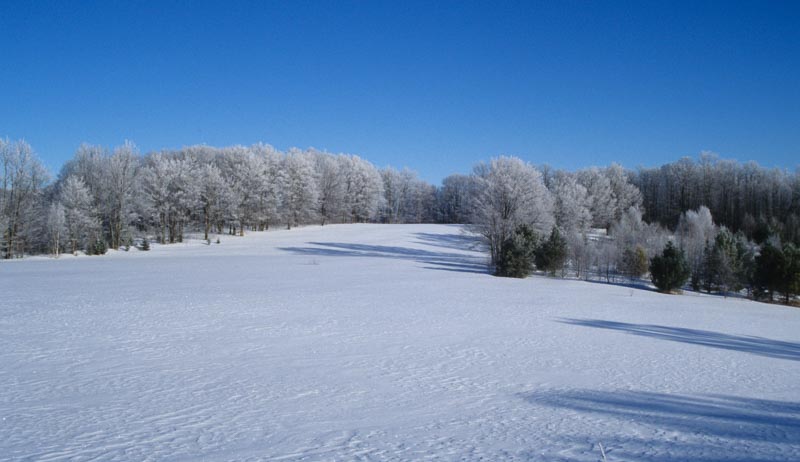
Winter in the northern hemisphere officially begins Dec. 21, but in the more northern regions of North America, snowy weather can arrive significantly earlier than that. In fact, where I live in northern Wisconsin, it’s not uncommon to have snowfall in October, and you can count on the ground being frozen and winter setting in during of November. Winter weather can be a nuisance for farmers, but appropriate pre-winter preparations can help your farm work proceed smoothly throughout the season. Here’s a simple to-do list to make sure your tools and equipment are in order when winter arrives.
1. Prepare & Store Summer Equipment
Unless you’re planning to stick tire chains on your lawn mower and use it to plow snow, chances are that you’ll put it away until the grass starts growing next spring. Any machines that you won’t use during the winter—lawn mowers, string trimmers, and so on—should be stored away in sheds or garages or (at the very least) under a lean-to where they’ll stay dry and be protected from the weather. Draining the fuel tank or adding a fuel stabilizer might also be necessary depending on the type of fuel you use and the length of time the machine will be out of use; consult the user manuals for advice on winter preparations.
2. Prepare Your Winter Equipment
Heavy snowstorms can cause power outages, so it is smart to have a portable generator to provide power for your house or outbuildings. That said, even the best portable generator won’t do you any good if it lacks fuel or is buried in a shed behind the summer gardening tools. The same goes for snow blowers, snow plows and other winter-related machinery—before winter sets in, make sure the machines are easily accessible and in working order. If you need to change the oil or spark plugs, now is the time to do it, and make sure you’ve got plenty of fuel on hand.
Also, if you plan to use an ATV during the winter (perhaps for plowing snow), be ready to install wheel weights, tire chains and/or snow tires to improve its performance in slippery conditions.
3. Gather Winter Clothes
So … just where are those warm winter gloves that you put away for the summer? Don’t be caught unprepared and searching for your winter gear on the morning that six inches of snow has fallen from the sky. Jackets? Scarves? Warm hats? Winter boots? Create a list of everything you’ll need and gather it during the fall. If items need washing, do that now; if your boots are wearing out and won’t survive another winter, get a new pair.
4. Prepare For Icy Conditions
Ice is a part of winter, and it likes to form wherever the snow gets packed down, which is to say, areas that you frequently use such as doorways and walkways. Keeping the ice under control can be a season-long battle, so arm yourself with tools such as a digging bar, a snow shovel and a digging shovel to carefully break up and remove patches of ice. Safety goggles (to protect your eyes) and salt (which lowers the freezing point of water and can help melt ice) should also be on your checklist.




